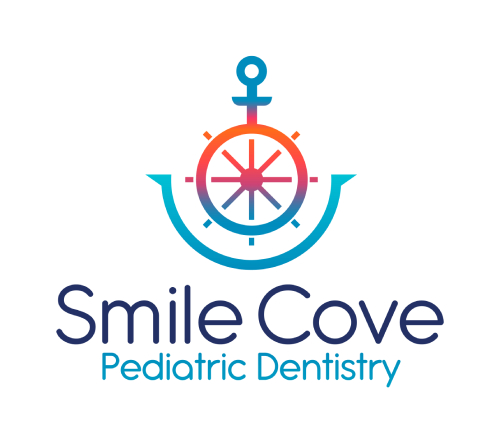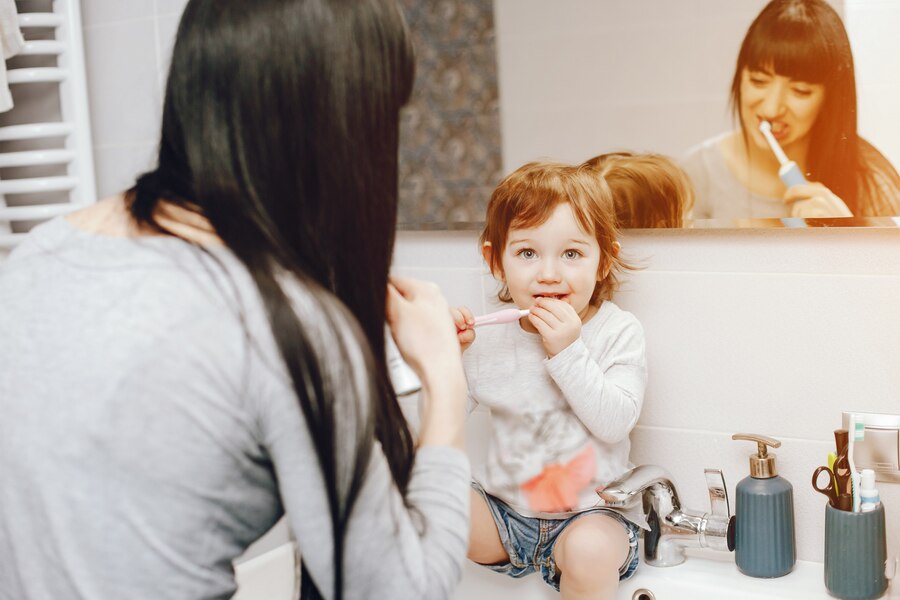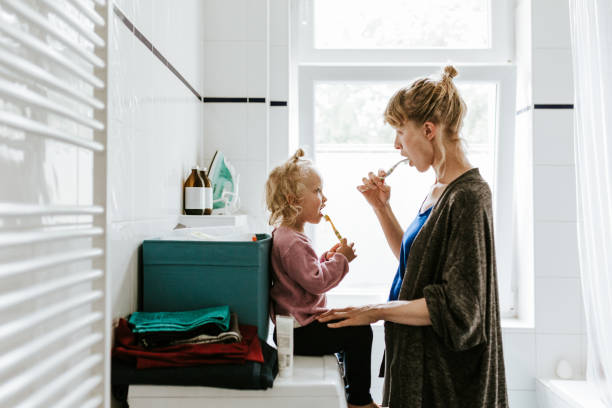Good oral hygiene habits are essential for your child’s health. As a parent, you might be wondering when to start brushing your child’s teeth and how to encourage them to develop a proper routine. This guide will walk you through everything you need to know about kids’ teeth cleaning and how to make it an enjoyable experience for both you and your little one.
1. The Importance of Oral Hygiene from a Young Age
Teaching kids to care for their teeth from a young age is a crucial step in maintaining their overall health. Healthy teeth and gums contribute to better speech, eating habits, and self-confidence. Establishing a brushing routine early in life helps prevent cavities and other dental issues that might affect your child as they grow.
Studies show that children with good oral hygiene habits are less likely to develop tooth decay and other dental problems. It’s easier to maintain healthy teeth if they learn these habits early. It’s essential that you as a parent take an active role in guiding them through this process.
2. When to Start Brushing Your Child’s Teeth
So, when should you begin? Ideally, you should start brushing your child’s teeth as soon as the first tooth appears. This usually happens around six months of age, but it can vary depending on the child. Even before teeth appear, you can clean their gums with a soft, damp cloth to remove bacteria.
From the time the first tooth emerges, you can start using a small, soft-bristled toothbrush. Use only a smear of fluoride toothpaste, about the size of a grain of rice, to avoid excessive fluoride ingestion. As they grow and more teeth come in, brushing should become a regular part of their daily routine.
3. Developing a Brushing Routine for Kids
Establishing a regular brushing routine can be challenging, but with patience and creativity, you can make it a positive experience. Here are some tips to help you get started:
- Make It Fun: Turn brushing into a game. You can use songs, timers, or even make up a story about their toothbrush being a superhero fighting off bad germs.
- Lead by Example: Brush your teeth together as a family. Kids love to imitate their parents, and seeing you brush will encourage them to do the same.
- Reward System: Create a reward chart for their brushing habits. Every time they brush without fuss, they earn a star, and after collecting a certain number of stars, they get a small reward.
4. Kids Teeth Cleaning Techniques
Proper brushing techniques are vital to ensure effective cleaning of your child’s teeth. Teach your child to use gentle, circular motions to clean all surfaces of their teeth. Make sure they understand the importance of brushing their tongue and the inside of their cheeks as well.
Here’s a step-by-step guide to brushing techniques for kids:
- Use the Right Amount of Toothpaste: For children under three years, use a smear of toothpaste. For children aged three to six, use a pea-sized amount.
- Angle the Toothbrush: Hold the toothbrush at a 45-degree angle to the gums.
- Brush in Small Circles: Encourage them to move the brush in small circles on each tooth surface.
- Brush for Two Minutes: Make sure your child brushes for at least two minutes, reaching all parts of their mouth.
5. When Should Kids Start Brushing on Their Own?
While it’s important to let children practice brushing by themselves, they might not have the dexterity to do a thorough job until they are around six to eight years old. It’s recommended that parents supervise their child’s brushing and even take a turn brushing for them, especially during the early years.
The American Dental Association suggests that parents should help brush their child’s teeth until they can tie their shoes independently. This is a good indicator that they have the motor skills needed for proper brushing.
6. Common Mistakes to Avoid in Kids Teeth Cleaning
Even with the best intentions, parents can make some common mistakes when it comes to their child’s oral hygiene. Here are a few things to watch out for:
- Using Too Much Toothpaste: Overusing toothpaste can lead to fluoride ingestion, which might cause fluorosis.
- Brushing Too Hard: Teach your child to brush gently to avoid damaging their gums.
- Skipping Flossing: Once your child’s teeth start to touch, introduce flossing to remove plaque between teeth.
7. The Role of Diet in Oral Health
Diet plays a significant role in your child’s oral health. Sugary snacks and drinks can cause tooth decay, so it’s important to limit these in your child’s diet. Encourage your kids to eat crunchy fruits and vegetables, which can naturally clean their teeth as they chew.
Water should be their primary drink throughout the day. It not only helps wash away food particles but also keeps their mouth moist, reducing the chances of tooth decay.
8. The First Dental Visit
It’s recommended that your child sees a dentist by their first birthday or within six months after the first tooth appears. Early dental visits are crucial in identifying any potential issues and setting a foundation for good oral care.
A pediatric dentist will provide guidance on how to brush your child’s teeth properly, what to expect as they grow, and how to prevent cavities and other problems.
9. Encouraging Kids to Brush Regularly
Consistency is the key when it comes to brushing habits. Encourage your child to brush twice a day — in the morning and before bedtime. You can make it part of their daily routine by setting a specific time for brushing.
Here are a few ways to encourage regular brushing:
- Use a Fun Toothbrush: Let your child pick out a colorful toothbrush featuring their favorite character.
- Toothpaste Flavors: Opt for a kid-friendly flavored toothpaste that they enjoy.
- Positive Reinforcement: Praise your child every time they brush without being reminded.
10. Signs Your Child May Need Help with Brushing
Even with regular brushing, there are some signs that may indicate your child needs a bit more help with their oral hygiene:
- Persistent Bad Breath: If your child’s breath smells bad despite brushing, it may be a sign of poor oral hygiene.
- Bleeding Gums: This can be a result of brushing too hard or an indication of gum disease.
- Visible Plaque Buildup: If you notice yellow or brown buildup on their teeth, it’s time to take action.
11. Building a Lifelong Habit
Teaching your child good oral hygiene practices is an investment in their health that will benefit them for a lifetime. Make brushing fun, be consistent with the routine, and involve them in the process to create positive habits.
12. Tips for Parents: Supporting Kids’ Teeth Cleaning
As a parent, you play the most critical role in your child’s dental health. Here are some tips to support your child in maintaining good oral hygiene:
- Monitor Their Technique: Ensure they are brushing properly and not missing any areas.
- Regular Dental Checkups: Schedule dental visits every six months to keep their teeth in top condition.
- Educate About Sugar: Teach them about the effects of sugar on their teeth and how to make healthier choices.
13. Adapting to Your Child’s Age and Stage of Development
Understanding that each child is different is crucial when it comes to introducing good oral hygiene practices. Every age group has its own needs and approaches when it comes to brushing, and adjusting your techniques as your child grows can make a huge difference in their dental health.
Ages 0-2: The First Steps to Oral Care
In this early stage, when your child’s first tooth begins to appear, it’s essential to make brushing a routine, even if it seems minimal. Using a soft, damp washcloth or an infant toothbrush to gently clean their gums can help them get accustomed to the sensation. This early exposure lays the groundwork for future brushing habits.
At this age, children often resist having their teeth brushed, so it’s a good idea to make the process fun. Sing a short song or talk to them during brushing to keep their attention and make the activity enjoyable. This is also the time to begin using a tiny smear of fluoride toothpaste to protect those new teeth from decay.
Ages 3-5: Building Independence in Brushing
During the preschool years, children develop more independence. It’s a great time to encourage them to take charge of their brushing routine while you supervise. Let them hold the toothbrush and guide their hand to help them get the technique right.
You can also start to introduce the concept of brushing in front of the mirror. This helps them see what they are doing and makes them feel more responsible for their own dental care. Continue to monitor their brushing, helping them reach areas that might be difficult, like the back teeth.
14. Fluoride and Its Role in Oral Health
Fluoride plays a crucial role in strengthening tooth enamel and preventing decay. It is an essential part of your child’s oral care routine but must be used appropriately to avoid any adverse effects.
When using fluoride toothpaste for kids:
- Use a smear the size of a grain of rice for children under three years old.
- For children aged three to six, use a pea-sized amount.
- Teach your child to spit out the toothpaste after brushing to minimize swallowing.
You can also ask your dentist if fluoride supplements or treatments are necessary, especially if your local water supply does not contain adequate fluoride levels.
15. Creating a Supportive Environment for Brushing
The environment in which your child brushes can greatly influence their attitude towards oral hygiene. Creating a positive, supportive, and engaging atmosphere will encourage them to look forward to brushing time.
Personalize Their Brushing Experience
Allow your child to pick out their own toothbrush and toothpaste. With so many options available in fun colors, themes, and flavors, children are more likely to feel excited about brushing if they are using products that they chose themselves.
You could also create a dedicated brushing area in the bathroom, where your child’s toothbrush, toothpaste, and a timer are easily accessible. This setup helps them feel responsible for their own oral care.
16. Overcoming Challenges in Kids’ Teeth Cleaning
It’s not uncommon to face resistance from your child when it comes to brushing their teeth. They may not understand the importance of the routine and might even find it boring. Here are some strategies to help overcome these challenges:
Turn Brushing Into a Storytime Adventure
Create a narrative where your child’s toothbrush is the hero battling the “cavity monsters” in their mouth. You can even give the toothbrush a name and make up stories that change with each brushing session. This imaginative approach can turn brushing into an exciting adventure rather than a chore.
Use Technology to Your Advantage
There are many apps and interactive videos designed to make brushing fun for kids. These tools guide them through the brushing process in a way that feels like play rather than a routine. Some apps even include brushing timers that play a song or display a character brushing their teeth alongside your child.
17. Educating Your Child About Oral Health
While it’s great to make brushing fun, it’s equally important to teach your child why it’s necessary. Explain to them how brushing helps keep their teeth strong and prevents cavities. Use simple, easy-to-understand language to communicate these concepts.
Books and Videos on Oral Hygiene
Reading books about dental care or watching short educational videos can reinforce the importance of brushing. Stories featuring their favorite characters going through their own brushing routines can make the message more relatable and engaging for young children.
18. The Role of Parents in Kids’ Teeth Cleaning
Parents have the most significant influence when it comes to instilling good dental habits in their children. Modeling the behavior you want to see is one of the most effective ways to encourage kids to brush regularly.
Consistency Is Key
Stick to a consistent brushing schedule that fits into your daily routine. Brushing in the morning and before bed should become as natural as any other daily habit. The more consistent you are, the more likely your child will adopt this behavior without being reminded.
Celebrate Milestones
Celebrate your child’s achievements in oral care, no matter how small. Whether it’s brushing for a full two minutes or finally mastering the circular brushing motion, celebrating these milestones can boost their confidence and reinforce their positive behavior.
19. Understanding Toothbrush Maintenance
Teaching your child how to take care of their toothbrush is also a valuable part of their oral hygiene routine. A clean toothbrush ensures effective brushing and prevents the spread of bacteria.
How Often to Change a Toothbrush
Children’s toothbrushes should be replaced every three to four months, or sooner if the bristles become frayed. A worn-out toothbrush won’t clean their teeth as effectively and could harbor bacteria. Encourage your child to inspect their toothbrush and let you know when it needs to be changed.
20. Dental Visits: A Key Component of Oral Health
Regular dental checkups play a crucial role in your child’s oral health. These visits help detect any potential issues early and provide professional guidance on maintaining a proper oral hygiene routine.
Choosing the Right Pediatric Dentist
Find a pediatric dentist who makes your child feel comfortable. A child-friendly environment with engaging decor, toys, and staff trained to work with kids can make a big difference in how they perceive dental visits.
Conclusion
Starting your child on a good oral hygiene routine from a young age sets them on the path to a lifetime of healthy smiles. It’s not just about when they should start brushing, but how you can help make it a natural part of their daily routine. Remember to lead by example, make brushing fun, and reinforce the importance of taking care of their teeth.
For expert advice and care in pediatric dentistry, turn to Smile Cove Pediatric Dental. They specialize in making dental care fun and comfortable for kids, ensuring a positive experience that will last a lifetime.


